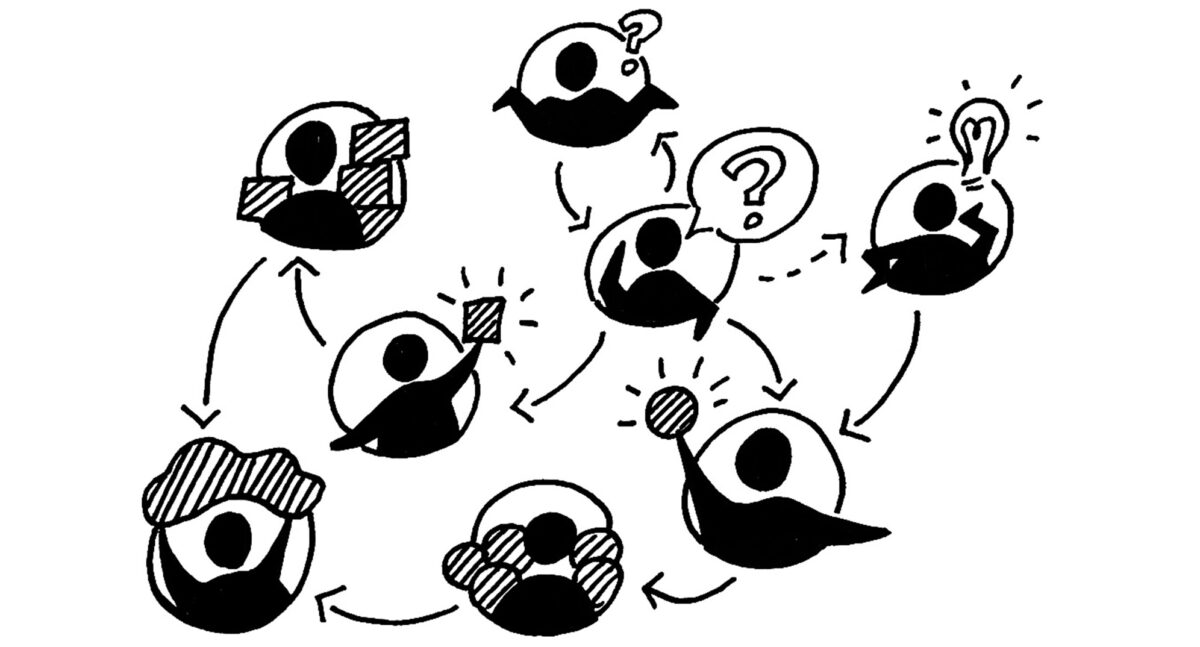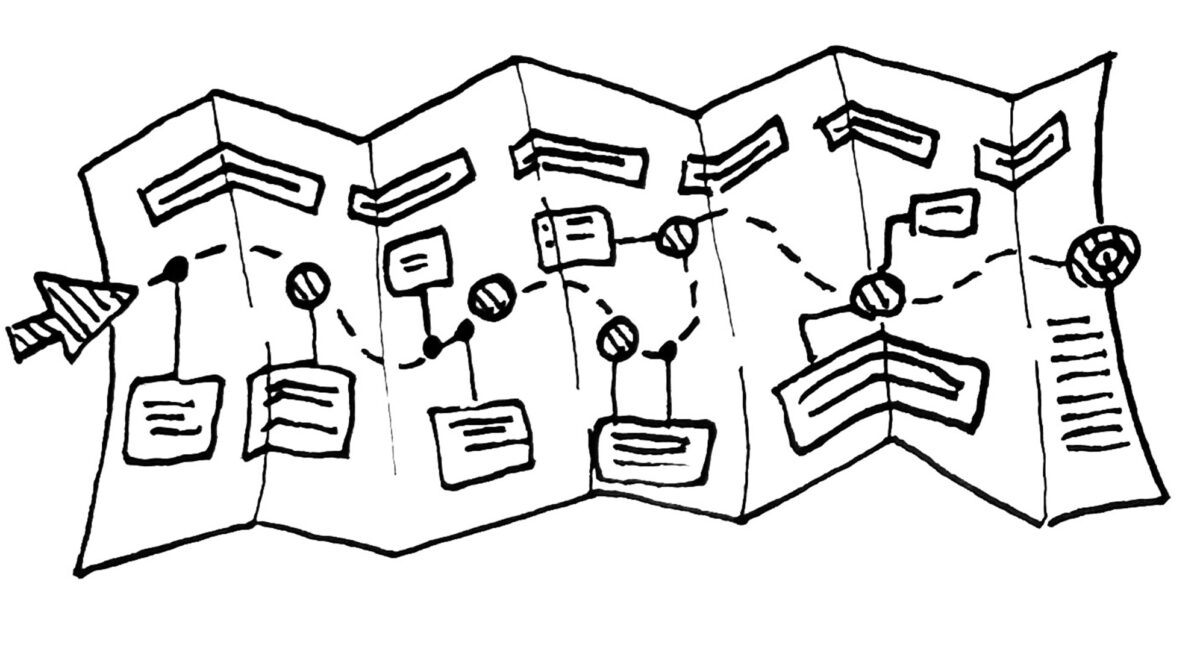Stakeholder Mapping is a way of diagramming the network of people who have a stake in a given system. The balance of any ecosystem is defined by the interrelationships of its parts. Each person, key or peripheral, plays a role in how the system works. As a visualization of people’s relationships, interactions, and needs, a Stakeholder Map visualizes the extent and impact of design decisions. It also helps to organize stakeholders by their relative interest and influence on a project.
STEPS:
- Identify a subject area to focus on.
- Convene a diverse team of collaborators.
- Generate a broad list of stakeholders. Ask questions like Who is involved? What do they care about? How much influence do they have?
- Draw a symbol of a person for each different type/ role.
- Write a speech bubble to summarize each type/ roles’ mindset.
- Write a label describing each role or title.
- Draw lines with arrows connecting the stakeholders.
- Label each line with a description of the relationship(s).
- Circle and label related groupings.
- Organize the groupings on the interest/ influence matrix.
- Identify next steps and roles in relation to the stakeholder mapping.
CONSIDERATIONS:
- Try to include a broad range of stakeholders.
- Strike a balance between breadth and relevance.
- Do not represent groups of people in one symbol.
REFERENCES:
- LUMA Institute. (2012). Stakeholder Mapping. In Innovating for people: Handbook of human-centered design methods. essay.
- Hanington, B. M., & Martin, B. (2019). Universal Methods of Design: 125 ways to research complex problems, develop innovative ideas, and Design Effective Solutions. Rockport Publishers.


